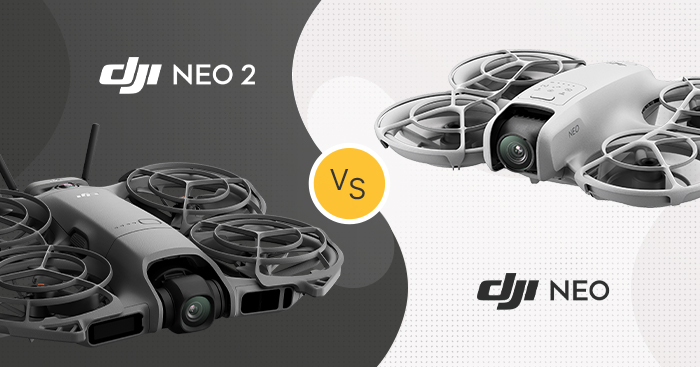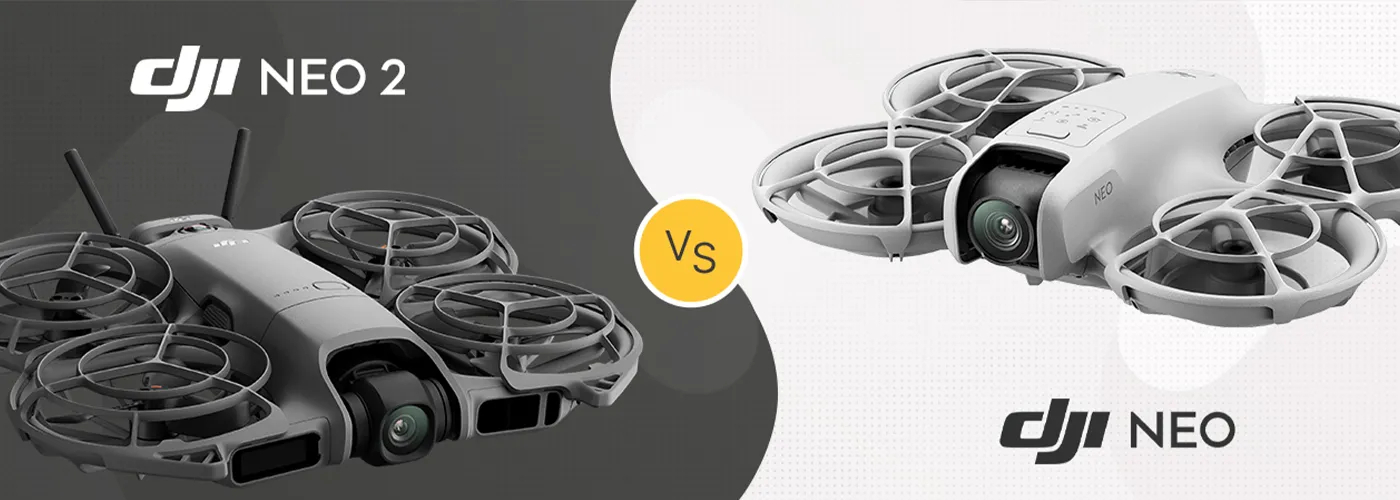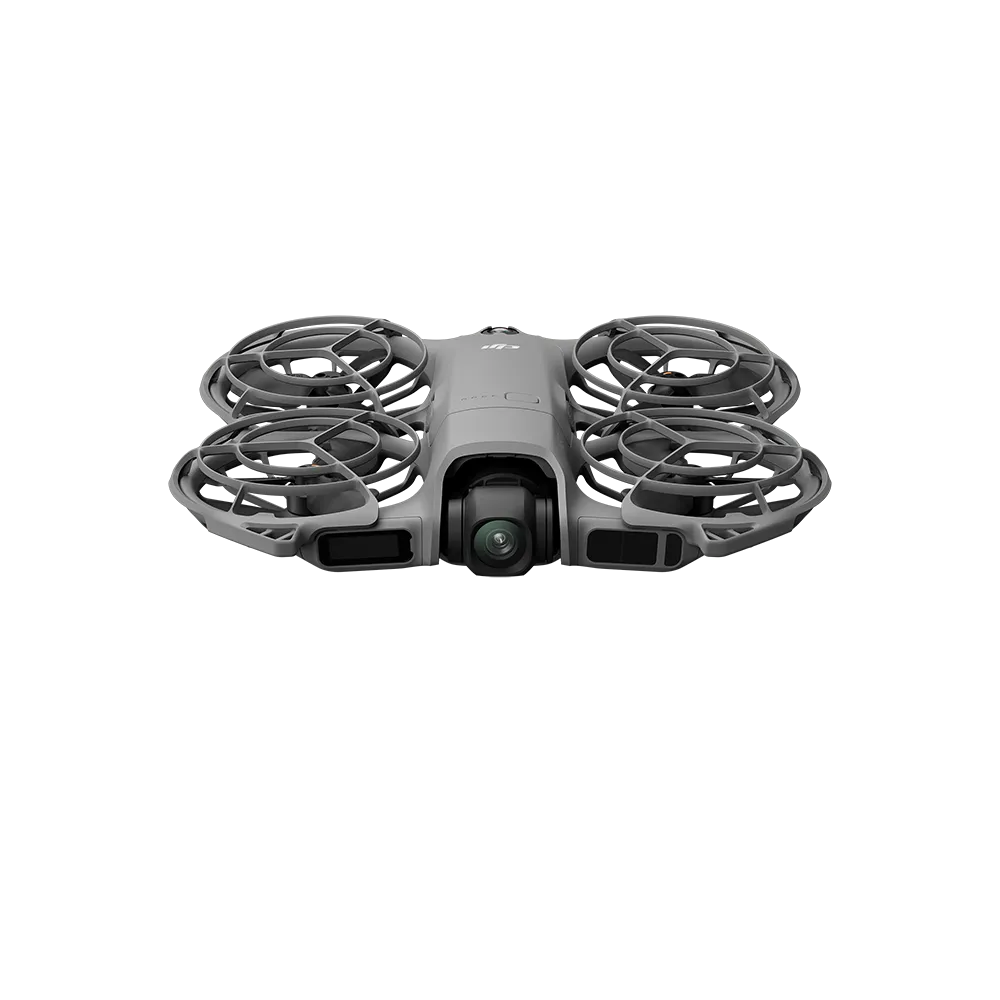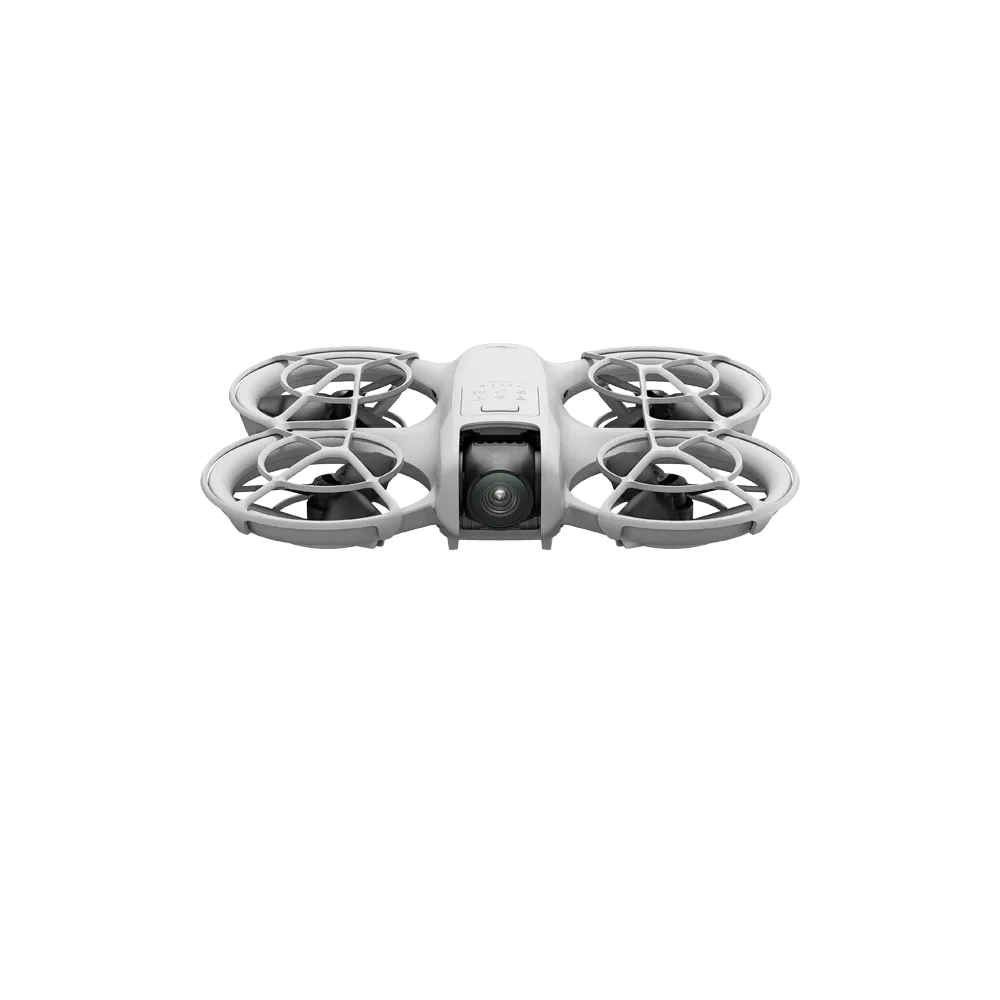Drone comparison | DJI Neo 2 vs DJI Neo


On 13.11.2025 DJI Neo 2 premiered - introduces a number of changes from the previous model. Both drones are designed to make recording as easy and fast as possible and to minimize the size of the equipment. In this comparison, we'll look at how the two models differ and answer the question of whether it's worth switching from the previous version?
Does DJI Neo 2 have better image quality than DJI Neo?
A two-axis gimbal provides much better image stabilization than a single-axis gimbal, so it has much less vibration and unwanted shake and thus the image, is much smoother. The extra 30 frames when capturing video in 4K and the aperture giving a brighter image are definitely a plus.
Somehow, the image may not be a leap with a "Wow!" effect while it is noticeably smoother, and this usually strikes the eye.
Building a drone DJI Neo 2 vs DJI Neo
At first glance, both drones have a very similar design. What makes the DJI Neo 2 stand out is on the front of the drone, and that is: a LiDAR sensor that allows advanced obstacle detection and avoidance, and a screen displaying the drone's current selected mode of operation. In addition, on the back, the drone has an omnidirectional sensor, which was missing from the previous model. These changes result in much more advanced operation of all autonomous modes.
DJI Neo's dimensions are 130×157×48.5 mm and DJI Neo 2's dimensions are 147×171×41 mm and by weight DJI Neo 2 is 16 g heavier, which translates into a more stable behavior in the wind.
Range, flight time and charging
Both drones maintain very similar performance in terms of range, flight time and charging. The range oscillates around 1.5 km in the city, using the controller. Controlling the drone via phone DJI Neo 2 has a noticeably more stable connection. Flight time of both drones is similar, differs by 1 minute more for DJI Neo 2 and is 19 minutes. Here it is worth noting that this is tested under laboratory conditions and the real flight time is usually around 15 minutes. The most noticeable difference is in the latter, or charging time, as the DJI Neo 2 will charge in about 8 to 20 minutes faster with a 65-watt charger, depending on whether you're charging at the hub or at the drone.
Comparison of specifications
| Drone |
|
|
| Weight | 151 g without digital transmitter 160 g with digital transmitter | 135 g |
| Class of drone | C0 | C0 |
| Max. flight time | 19 min | 18 min |
| Camera | 1/2" 12 MP | 1/2" 12 MP |
| Camera | 4K/60 fps | 4K/30 fps |
| Gimbal | 2-axis | 1-axis |
| Range | up to 6 km | up to 6 km |
| Obstacle detection sensors | Multidirectional monocular vision system, combined with a lower infrared sensor and a forward-facing LiDAR sensor | Lower positioning system |
| Maximum speed | 43.2 km/h | 57.6 km/h |
| Wind resistance | 38.52 km/h | 28.8 km/h |
| Operating temperature | -10° to 40° C | -10° to 40° C |
| Internal memory | 49 GB | 22 GB |
| Compatible with screen controller DJI RC | Yes | Yes |
| Price for Fly More Combo | 1849 zł | pLN 1,649 |
Price and sets
Here it is worth noting that DJI has prepared a kit that has not been present before, namely DJI Neo 2 Fly More Combo(drone alone) at a gross price of 1529 PLN. Which includes the drone, 3 batteries and a charging hub. This kit is slimmed down by the controller and will work well for those who will use the drone through automatic functions and do not need further flights.
We have compared the other sets, whose compositions are almost identical, in the table below*:
| pLN 1099 | 1849 zł | 2649 zł | 859 zł | 1549 zł | 2349 zł |
*Prices quoted above are gross and valid as of 13.11.2025 and are subject to change.
















